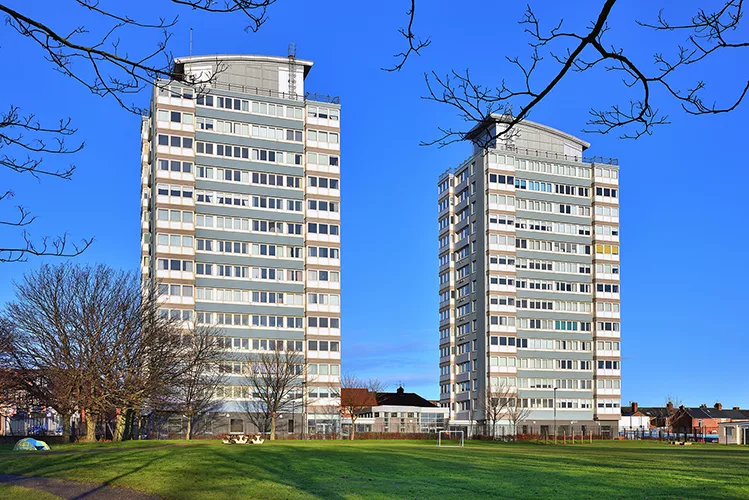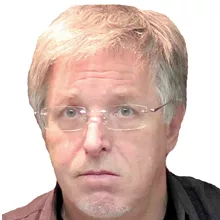Global heat, fires, floods and storms are bigger news than ever before. Scientists predicted them as accurately as possible, given numerous variables, and a professional requirement for conservative, credible projection. Sadly, actual events are moving toward worst-case scenarios and greater future uncertainty.
Less reported is the possibility of more pandemics. A disease called Crimean-Congo hemorrhagic fever has been detected in Iraq, Namibia and Pakistan, where two people died from the disease. Iraq had 212 cases last year; this year, an estimated 100 cases have already been diagnosed, with 13 deaths.
Ali Mirazimi, a virologist at the Karolinska Institute in Sweden, says that ticks carrying the virus were “moving up through Europe due to climate change, with longer and drier summers.” Bird flu (Avian influenza) activity also has increased, and some scientists are worried it will jump to humans.
In an age when it’s easy to make your views known, our global medical establishment takes a lot of abuse. I think they are dedicated, courageous, hardworking, accomplished and innovative.
The COVID-19 pandemic serves as a good example. It has killed about seven million people. In early 2020, it was taking more than 5,000 of us every day and, despite the best efforts of medical people, this rose to about triple that number by 2021, including thousands of nurses and doctors. However, they battled on through to 2022, when vaccinations finally began making an impact. A year later, daily deaths are less than 500.
This summer, ASHRAE published Standard 241, Control of Infectious Aerosols (in Buildings). It establishes minimum requirements to reduce the risk of airborne disease transmission, such as the SARS-COV-2 virus, which causes COVID-19, the flu virus and other pathogens in buildings such as single-family and multifamily homes, offices, schools and health-care facilities.
The standard applies to new and existing buildings and major renovations, and provides requirements for many aspects of air system design, installation, operation and maintenance. Please use it.
The Misinformation Disease
These days every time I sit down to write about cleaner systems in buildings and communities, I feel like I should start by dispelling the gushing flow of putrid misinformation I read in mainstream and social media.
The fossil-fuel companies are now desperate and spending their billions in profits to pull out all the stops and arrange an absolute barrage of articles and broadcast interviews saying heat pumps don’t work or electric vehicles are not greener than gas cars.
The funniest one comes from nuke profiteers trying to convince us that, contrary to stunningly obvious evidence, nuclear power is inexpensive (OMG, that’s all I need to know about you!). However, I’ll try to stifle my laughter (and anger) and focus instead on the abundance of really good not-fake news about green solutions being implemented in North American buildings.
Multiunit Residential
In the past, we’ve reported on several projects in the Philadelphia area combining heat pumps, better building envelopes and solar panels designed or built by a firm called Onion Flats. In a recent follow-up talk with one of the company’s partners, Tim McDonald, we learned that the Inflation Reduction Act and other positive developments have resulted in a frenzy of green building activity all over the country in both the new construction and retrofit categories.
Onion Flats works on an initiative called REALIZE with the Rocky Mountain Institute that seeks to create models and processes to speed up decarbonization of new and existing buildings while dramatically containing costs.
Because clean systems are now in widespread use and McDonald’s group has decades of experience with them, the kinds of projects, although designed to demonstrate newish approaches, are mostly not small. The company is working at many sites with clients in Massachusetts, Pennsylvania and Kentucky who are constructing or renovating multiunit residential projects in the hundreds of units.
Wherever practicable, the building model involves panelized systems because the early talks with RMI were influenced by the Energiesprong program and the success of Chris Benedict in New York City. Energiesprong is a building retrofit standard from the Netherlands used in France, the United Kingdom, Germany and the state of New York.
The model provides a low-carbon mechanical system and an entirely new factory-built, panelized insulated cladding to the exterior of a building, along with a new insulated roof over the existing roof. It only takes one week to install and comes with a 30- or 40-year warranty. Benedict creates something similar for existing, mostly flat-roof affordable housing without necessarily using panelized systems. In both cases, tenants remain in place or only partly and briefly relocate.
In west Boston’s Allston-Brighton neighborhood, Onion Flats is now designing a 130-unit retrofit and three other buildings of similar size for Preservation of Affordable Housing, which builds affordable housing in 17 states. It is also renovating 10 1888 duplexes for the same client in Allston-Brighton, removing gas systems, installing heat pumps and heat pump water heaters, better building envelopes and solar panels, and saving more than $43,500 in utility costs each year. Before the renovation, total energy use intensity was 75.2 kBTU/square feet/year. Afterward, it was 23.0 kBTU/ square feet/year. After the solar is installed, it will be zero.
The 130-unit building is located next door to another POAH building of about 300 units. “These projects offer great opportunities for comparison,” McDonald says. “The larger building was already being renovated when we were asked to provide our estimates. By using panelization and not moving the tenants out, we came in at 50% less cost.”
I should mention that panelization hasn’t always saved money, but depending on the project, some builders are obviously finding ways to make it do so.
McDonald’s team is also working on a deep energy retrofit and significant expansion for a YMCA recreation center in New Bedford, Mass. “It will be Passive House and we’re shooting for net zero,” he says. “We have enough parking lot for the solar carports we’ll need. We’re hoping this becomes a new model for YMCAs because the organization is looking to green many of its locations.”
One other project is potentially bigger than all the aforementioned. Onion Flats is in the early stages as one of the architects working with UberGreenSpaces.com on a proposal for parts of a large community in Louisville, Ky., that will include affordable housing and institutional amenities. I’ll have more on this in a future column.
Heat Batteries
Batteries for electricity storage are increasingly under the microscope as key technologies in the clean energy arsenal. There are different types, capabilities and costs. Lithium-ion batteries have some notoriety for proving they can work well in vehicles, home battery scenarios and power plants. However, they are relatively expensive and, by 2030, there might be a squeeze on the materials, depending on the emergence of competing systems that are better matched to specific applications and budgets.
Hundreds and perhaps thousands of companies, universities and government labs are conducting research on different kinds of batteries for cars, single-family homes, microgrids, industrial applications and power plants. For vehicles, evidence is that solid-state batteries and sodium batteries will emerge sometime in the next five or 10 years to take some of the pressure off lithium-ion.
For power plants, buildings and industrial processes, it might be too early in the game to predict which technologies will dominate technically and commercially. And our discussion here about interesting products from Sunamp should not be seen as a recommendation.
The company produces products based on a proven and relatively simple thermal battery technology and calls them heat batteries. Sunamp has sold some models in the UK since 2015 and is beginning to move into the U.S. market. It conducted extensive research, documented its successes in the UK, France and elsewhere in Europe, and recently installed its products in U.S. single-family homes in New Hampshire and New Mexico.
The case example in New Mexico consisted of two Sunamp 200-liter-equivalent heat batteries. One provides hot water for domestic use and the other supplies in-floor heating during the night. They are charged using surplus rooftop solar energy, which is expected to be a popular application. Surplus power is stored with the help of a patented salt hydrate phase-change material.
The technology has been independently rated for at least 10,000 cycles, although house tests conducted by the company have achieved four times this number, according to Tom Sottile, general manager for Sunamp Projects in New York.
In a recent conversation with Plumbing Engineer, he notes that in addition to long life, Sunamp heat batteries come in several compact sizes that are much smaller than equivalent conventional hot water tanks, and their heat loss is less than half as much. When compared with a Tesla lithium-ion battery, the main advantage is cost. Sottile says you get equivalent kilowatt/hours with Sunamp for about one-third of the up-front outlay.
In New Haven, Conn., a Sunamp thermal battery was seen as the best solution for storing excess solar and using it for hot water for an outdoor kitchen. It mostly eliminated a long run of pipe, some freeze-thaw issues, vermin problems and added penetrations, which are preferably minimized in super-insulated homes. An undersink, on-demand water heating system would not have provided enough hot water.
Larger Applications And Industrial Processes
Sunamp batteries were combined with geothermal to replace gas boilers for a 364-unit, two-building high rise in Sunderland, UK. Their small footprint in each apartment was seen as a key advantage and the conversion was completed with residents in place. The new system saved 420 tonnes or 70 percent of carbon dioxide emissions, reduced gas system maintenance, safety inspection and certification costs, and reduced the risks of carbon monoxide poisoning or Legionella.
Sunamp batteries were used to store cooling energy in a district energy plant in Paris, and the company says they offer significant potential for greening industrial and agricultural processes, too.
For example, although indoor farming is still seen as much more expensive relative to conventional farms, with the heat from climate change decimating crops worldwide, it may be time to improve the indoor farming equation. Sunamp says its batteries could be used to reduce power loads, help with energy recovery systems, and eliminate much of the cost associated with transporting food from remote growing locations.
In addition to its already-commercialized phase-change material, Sunamp has developed formulations that can store thermal energy at temperatures as high as 964 degrees for heavy industry and as cold as -101 degrees for frozen food, vaccines and chilled food operations. No case studies were mentioned, and it may be that these applications are still being pilot-tested.
BF Nagy is becoming a renowned climate solutions specialist, author of the critically acclaimed book “The Clean Energy Age,” and more than 200 articles on clean energy, clean water technologies, green government programs and energy economics. A podcast host and broadcast personality, he has traveled all over North America interviewing experts in climate science, government, engineering, architecture, clean transport, renewables and storage.






